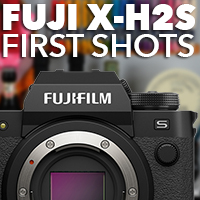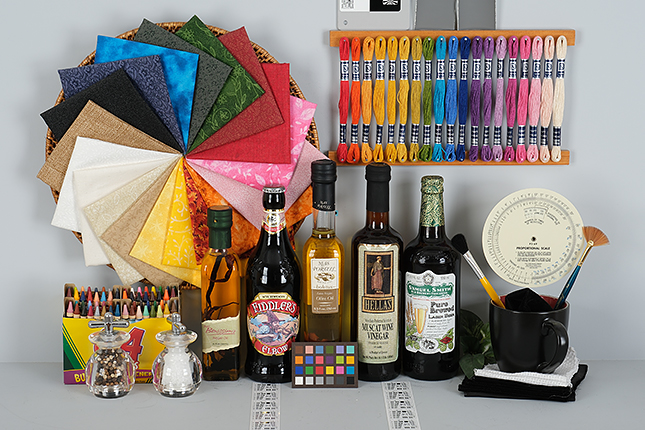Fujifilm X-H2S First Shots: Sample images from Fuji’s first stacked sensor flagship X Series camera
posted Wednesday, October 5, 2022 at 12:00 PM EDT
Click here to browse our Fuji X-H2S First Shots

Last week, we shared sample images from the new Fuji X-H2, but this week we return to the lab with the other Fujifilm flagship camera, the high-performance X-H2S. Announced earlier in the year, the Fuji X-H2S is designed with speed and performance as two of its hallmark features. Unlike any previous Fujifilm camera before it, the X-H2S is the first Fuji camera to sport a stacked sensor. It's still using an X-Trans style sensor, but similar to cameras like the Sony A1 or Nikon Z9, the Fujifilm X-H2S's stacked sensor design allows it to read off the sensor data much more quickly than a traditional CMOS image sensor. The result is super-fast burst shooting capabilities, little to no rolling shutter artifacts when using the electronic shutter and increased AF speed and reponsiveness. The camera is just plain fast.

From an image quality standpoint, the X-H2S is similar in someways to previous X Series cameras, such as the X-T4, X100V, X-Pro3 and more, in that it maintains the same 26.1-megapixel sensor resolution -- whereas the X-H2, on the other hand, went the high-resolution route with a 40MP X-Trans sensor. Of course, the Fuji X-H2S uses an all-new sensor and a newer-generaton X Processor 5 than these earlier cameras, so we're looking at an all-new imagine pipeline despite the same megapixel count. Nonetheless, the ISO range of the X-H2S is the same as these earlier models, spanning ISO 160 up to ISO 12,800 in the native sensitivities. The camera's ISO can also be expanded down to ISO 80 and up to ISO 51,200. Furthermore, while the X-H2S also includes in-body image stabilization, much like its X-H2 sibling, this high-speed model does not include any high-resolution Pixel-Shift Multi-Shot mode.

We've already published our in-depth hands-on review of the X-H2S, so if you're curious to see how the camera performs in the field, we urge you to check that out, as well. However, if you're wondering what the image quality looks like across the camera's full ISO range -- and how it compares against other cameras we've tested -- our First Shots series of lab sample images should take care of that! As usual, we have two full series of Still Life test shots, both with RAW+JPEG pairs. In one series, we shoot with the camera's default level of in-camera noise reduction processing (NR5D), and then another with the lowest setting of in-camera NR processing (NR1). In the case of the X-H2S, the camera doesn't let you disable NR processing completely, so we simply set the camera to the lowest available setting.
To see how the Fujifilm X-H2S's image quality performs across its full ISO range, head over to our Fuji X-H2S Samples Page and pixel-peep away!